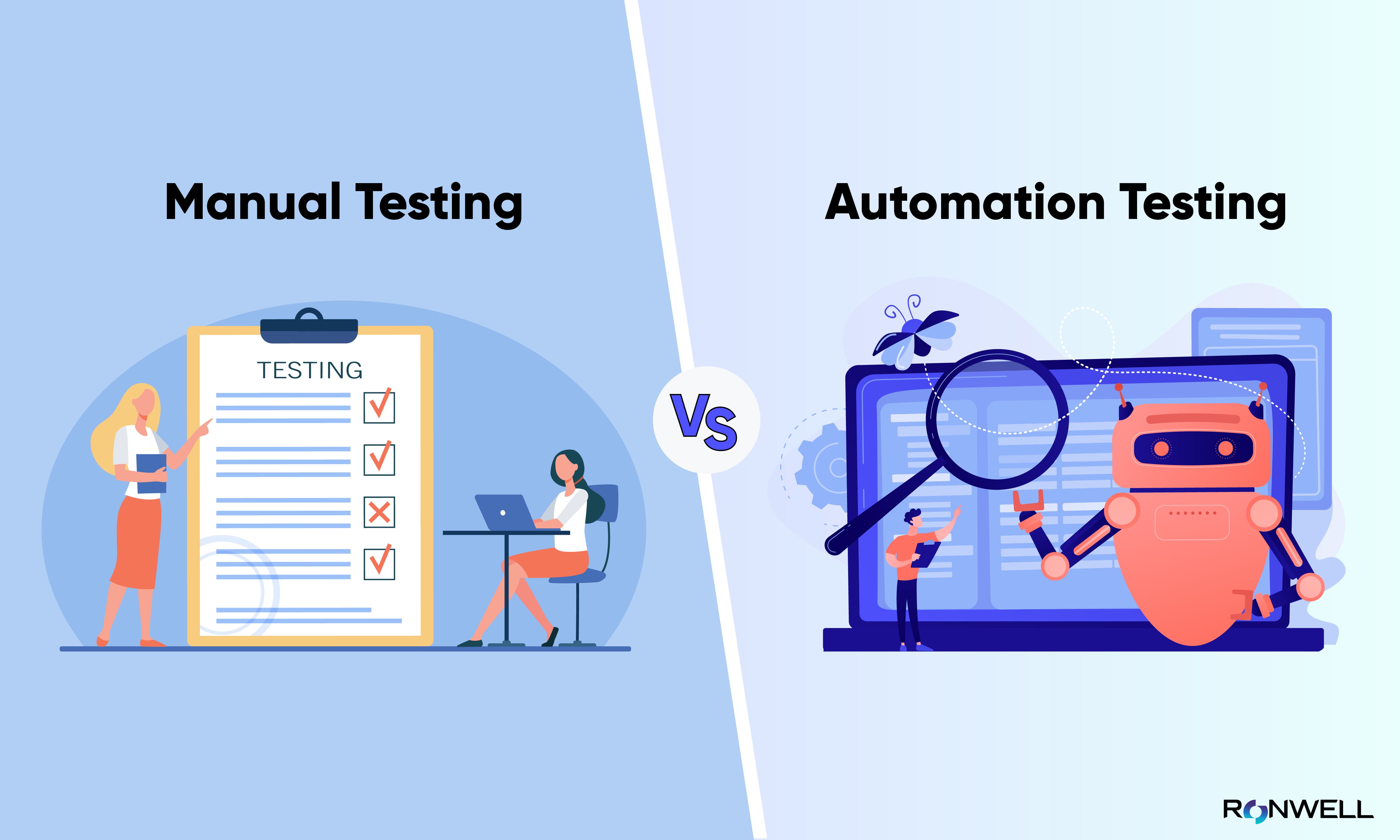Exploring the Future of Automation Testing in Software Growth
Exploring the Future of Automation Testing in Software Growth
Blog Article
From Handbook to Automated Screening: A Comprehensive Overview to Transitioning Smoothly and Effectively
In the realm of software application screening, the shift from manual to automated procedures has come to be a significantly important change for organizations seeking to enhance performance and precision in their screening practices. The journey from handbook to automated testing is not without its challenges, yet when come close to tactically and with a clear plan in mind, the benefits can be substantial.
Benefits of Automated Checking
Automated testing uses various benefits, enhancing efficiency and accuracy in software development procedures. One main benefit is the significant decrease in screening time. Automated examinations can be run at the same time on numerous tools and running systems, significantly accelerating the screening stage compared to hand-operated screening. This enhanced efficiency enables faster responses on the high quality of the software, allowing programmers to identify and resolve problems without delay.
Moreover, automated screening ensures a higher level of accuracy in spotting defects. Considering that automated examinations adhere to predefined manuscripts, human mistake is minimized, resulting in more trusted test results. Consistency in screening is likewise boosted, as automated examinations implement the exact same actions specifically each time they are run. This consistency is important in making sure that all capabilities of the software application are thoroughly checked, lowering the chance of undetected bugs sliding via to production.
Selecting the Right Tools

To start with, evaluate your purposes and requirements. Comprehend the scope of your project, the modern technologies involved, and the skill set of your group. This analysis will assist you figure out the features and abilities you require in your testing devices.
Second of all, take into consideration the compatibility of the tools with your existing systems and procedures. Smooth integration with your current software application growth lifecycle is vital to ensure a smooth change to automation.
Additionally, examine the scalability and flexibility of the devices. As your screening requires advance, the devices should be able to adjust and accommodate modifications properly.
Finally, factor in the assistance and neighborhood around the tools. When applying automated testing, durable support and an active customer community can provide valuable resources and help. By thoroughly thinking about these facets, you can pick the right devices that straighten with your demands and established the phase for an effective shift to automated screening.
Creating Efficient Examination Manuscripts

When crafting test manuscripts, it is important look at here to think about the specific needs of the software application being checked and make sure that the manuscripts address all critical functionalities. Descriptive and clear naming conventions for test manuscripts and examination cases can improve readability and maintainability. In addition, including error handling devices within the test manuscripts can aid in identifying and addressing concerns immediately.
Moreover, arranging examination manuscripts into modular parts can boost reusability and scalability, minimizing redundancy and boosting performance in examination script upkeep. Routine testimonials and updates to examine manuscripts are crucial to keep pace with advancing software program needs and capabilities. By complying with these principles, testers can produce durable and efficient test scripts that contribute considerably to the success of automated screening processes.
Integrating Automation Into Workflows
Efficient integration of automation devices into existing process boosts and streamlines procedures productivity within software program development cycles. When integrating automation right into operations, it is essential to identify repeated tasks that can be automated to conserve time and minimize human error. By seamlessly integrating automated testing tools like Selenium or Appium right into the software program advancement lifecycle, teams can accomplish faster responses on code changes, resulting in quicker pest discovery and resolution. This integration permits continuous testing throughout the growth procedure, guaranteeing that any type of issues are identified early on, causing higher software quality. Additionally, automation can be utilized to activate examinations immediately after each code devote, offering instant recognition and freeing up testers to concentrate on even more complex scenarios. Proper integration of automation tools needs collaboration in between growth, testing, and procedures teams to develop a unified operations that maximizes efficiency and efficiency in supplying high-quality software program products.
Ensuring a Smooth Shift
Effectively transitioning to automated testing includes careful planning and cautious execution to maximize and lessen disruptions efficiency in the software application advancement process - helpful site automation testing. To make certain a smooth transition, it is vital to start by carrying out a thorough analysis of the existing screening processes and identifying areas where automation can bring the most substantial benefits. Engaging with all stakeholders early while doing so, consisting of developers, testers, and task supervisors, is crucial for garnering support and buy-in check here for the automation effort
Communication is key throughout this change phase. Clear interaction of the goals, advantages, and expectations of automated screening assists to handle any kind of resistance or problems that might occur. In addition, offering adequate training and resources for group members to upskill in automation devices and strategies is essential for ensuring an effective change.

Final Thought
To conclude, transitioning from handbook to automated screening supplies many advantages, including boosted efficiency and reliability. By selecting the suitable devices, creating efficient test scripts, and incorporating automation flawlessly into workflows, companies can make sure a smooth and effective shift. It is important to accept automation as a beneficial asset in software screening processes to boost total quality and productivity.
In the world of software application testing, the change from guidebook to automated procedures has actually become an increasingly important shift for companies seeking to enhance performance and accuracy in their testing practices. Automated tests can be run concurrently on numerous gadgets and operating systems, drastically speeding up the testing stage contrasted to manual testing. Uniformity in screening is additionally improved, as automated tests carry out the exact same steps precisely each time they are run.To ensure the successful implementation of chosen screening tools, the creation of reliable examination manuscripts plays a critical duty in validating the performance and performance of automated procedures - automation testing. By following these concepts, testers can produce durable and effective test manuscripts that contribute significantly to the success of automated screening processes
Report this page